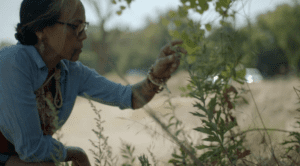How can we partner with tribes to integrate traditional ecological knowledge in conservation and land management? That was the question addressed by speakers from the Yurok and Gabrielino-Tongva tribes at a workshop during the California Invasive Species Conference held in October.
Traditional ecological knowledge, also known as Tribal Ecological Knowledge or TEK, is the relationship established by tribes through their generational experiences with ecosystems. While traditional ecological knowledge is the commonly used term, the most acceptable term is tribal ecological knowledge. This terminology recognizes how this body of knowledge is constantly evolving as tribal members continuously acquire knowledge through stories and experiences.
An integral part of TEK is understanding that humans are a part of ecosystems just as much as any other species. We have evolved alongside the environment.
By removing humans from land management, ecosystem roles become altered. The removal of indigenous peoples from ancestral lands, the introduction of invasive species, and native biodiversity loss have coincided to further disrupt ecosystem roles. Panelist and Yurok wildlife biologist Tiana Williams stated, “land management should be about considering what additional roles humans need to play until ecosystem roles are restored.”
Therefore, using TEK means examining the relationships a species has on an ecosystem wide scale and considering how we can fill the gaps in ecological services.

Performing this kind of land management is an opportunity for collaboration between tribes, agencies, and nonprofits. Kioya Tuttle, Yurok pollution prevention manager, outlined the need for collaboration with scientists to connect tribal oral stories to technology. Tribal elders have knowledge of historical species presence and roles, and specialists can offer scientific background. Tribes and partners can collaborate to find effective restoration practices.
How can government agencies and nonprofits effectively partner with tribes? The key advice shared by various tribal members is to prioritize building trust and establishing connections with tribes. When parties build trust, they can learn from each other, and their collaboration can yield great results.
One of the best practices for facilitating collaboration once trust is established is adopting co-management agreements. This strategy goes beyond surface-level consultation to provide equitable knowledge sharing between parties and establishes shared responsibilities.
In recent years, California has attempted to rectify injustices to Indigenous communities. From Governor Newsom issuing an apology to Native Americans for the State’s historical wrongdoings and establishing a Truth and Healing Council, to integrating TEK into the state’s commitment to conserve 30 percent of California’s and coast waters by 2030.
In October 2021, leaders from the Yurok Tribe and California State Agencies talked about future goals for indigenous land stewardship, you can read more here. To learn more about indigenous history in California State Parks, we invite you to visit our ParkSpeak events to hear stories from Sue-meg and Año Nuevo State Parks. And to learn about the ancestral land you stand on, we encourage you to visit native-land.ca to understand the ancestral indigenous lands and the people who resided here.
